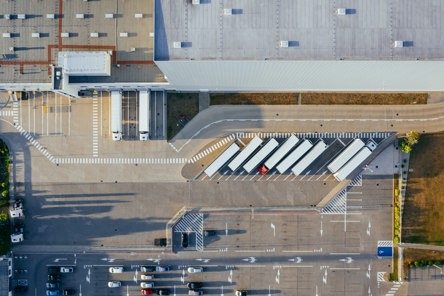Distribution centers (DCs) and fulfillment centers (FCs) are two critical components of the modern supply chain and logistics infrastructure. Though they share some common features and objectives, there are important distinctions between the primary functions, operations, and capabilities of distribution centers versus fulfillment centers. Understanding these key differences is vital for businesses seeking to optimize their logistics networks and provide the best possible service to their customers.
In simple terms, DCs act as large centralized hubs for storing goods and distributing them in bulk quantities to a variety of outlets or other DCs . FCs , on the other hand, are designed to handle individual orders directly for end consumers and execute fast, efficient order processing and shipping. The rise of ecommerce and online shopping has led to exponential growth in FCs , while distribution centers remain essential for traditional brick-and-mortar retail supply chains. Examining the evolution, structural variations, and advantages of each model provides crucial insights for modern supply chain management.
HISTORICAL DIFFERENCES
The development of DCs grew primarily out of the need for efficiency, organization, and economies of scale in supply chains. By centralizing inventory in larger warehouses, suppliers and retailers could consolidate shipments and reduce transportation costs. Regional DCs sprung up near transportation hubs or areas of manufacturing to serve wider territories. The function of these DCs was focused purely on high-volume storage and distribution to retail outlets.
The advent of ecommerce dramatically changed supply chain requirements by introducing millions of end consumers into the mix. As online shopping exploded in popularity, the limitations of the traditional DC model became clear. Fulfilling single-item customer orders required greater flexibility and speed. This led to the rise of FCs designed explicitly to handle direct-to-consumer distribution of individual purchases. By optimizing for speed, accuracy and responsiveness, FCs enabled rapid delivery from online and omnichannel retailers.
PRIMARY FUNCTIONS OF DISTRIBUTION CENTERS & FULFILLMENT CENTERS
The core functions of DCs can be summarized as centralized storage and widespread product distribution in bulk. DCs are designed to receive large shipments of goods from suppliers or manufacturers and allocate them efficiently to retail locations or other facilities. They deal primarily in full pallets, cases, and containers of inventory, with an emphasis on consolidating shipments to gain transportation efficiencies.
In contrast, FCs are structured around processing a high volume of individual orders. They are closely integrated with ecommerce operations and retail sales channels to enable prompt order fulfillment. Key FC tasks include detailed order processing, picking of inventory items or packages, final assembly of orders, and facilitation of outbound shipping. The volume of orders can reach millions of units per week during peak periods, requiring highly scalable capabilities.
DISTRIBUTION CENTERS
- Serve as storage hubs for products, consolidating inventory from many vendors
- Focus on transporting goods to retailers or other distribution centers in bulk
- Deal in high-volume, pallet-level inventory management and shipping
FULFILLMENT CENTERS
- Handle individual orders from end customers, both for ecommerce and omnichannel retail
- Often linked directly to online shopping carts and order management systems
- Focus on picking, packing, and shipping products on an item-by-item basis
STRUCTURAL AND OPERATIONAL DIFFERENCES
The distinct goals of DCs versus fulfillment lead to major differences in size, layout, technology, and inventory management practices. DCs prioritize long-term bulk storage while FCs optimize for speed, accuracy, and responsiveness.
1. SIZE AND LAYOUT
DCs are generally larger and designed for cross-docking, high-density storage, and bulk transport. They have very high ceilings and wide aisles for pallet movements.
FCs optimize space for order processing tasks like picking and packing. They emphasize flexibility, with extensive conveyor systems and large areas devoted to shelving and sorting individual items
2. TECHNOLOGY AND AUTOMATION
DCs focus on large-scale material handling like pallet jacks, yard management software, and high-volume shipping systems. RFID tracking provides visibility into pallet-level inventory.
FCs rely heavily on automation and software to execute individual orders. This includes pick-to-light systems, automated sortation, robotic pickers, and integrated inventory management.
3. INVENTORY MANAGEMENT
DCs emphasize long-term bulk storage and replenishment planning. Stock keeping units are handled at the pallet or case level.
FCs need advanced, real-time visibility into inventory across multiple facilities and sales channels. Item-level tracking allows efficient order promising and rapid turnover.
GEOGRAPHIC PLACEMENT AND REACH
The geographic placement and reach of distribution centers and fulfillment centers differ considerably based on their role in the supply chain. DCs are optimally located near manufacturing facilities and transportation hubs. This enables them to efficiently receive bulk product from suppliers and distribute it at scale across broad regions. Manufacturing proximity and access to major highways, rail lines, air cargo, and shipping ports allows DCs to minimize transportation expenses and maximize delivery range. High-volume throughput at centralized DCs generates significant economies of scale.
In contrast, FCs prioritize proximity to population centers and end consumers. By locating close to major cities and metro areas with large clusters of buyers, FCs can offer rapid order turnaround and quick last-mile delivery. The local geography and delivery speed take priority over bulk shipping efficiencies. Situating FCs near the urban cores they serve enables fast outbound shipping to customers in the surrounding region. Meeting consumer expectations for ever-faster delivery is reliant on having inventory positioned close to local markets.
The strategic location priorities for distribution and fulfillment facilities stem directly from their differing roles. DCs focus on span of reach, whileFCs emphasize speed to customers. Optimized placement is crucial to maximize the advantages of each model.
ADVANTAGES AND LIMITATIONS
Distribution centers provide major advantages through their bulk scale and regional consolidation of inventory. By centralizing stock in one facility, they can achieve economies of scale benefits from high-volume throughput and full truckload shipping. Regional consolidation also allows for lower transportation costs by aggregating goods heading to common destinations. However, DCs lack the flexibility and precision to handle individual direct-to-consumer orders efficiently. They are optimized for B2B bulk logistics rather than high-velocity order fulfillment.
FCs excel at processing very high volumes of individual ecommerce orders rapidly. Their infrastructure facilitates quick inventory allocation, picking, and shipping of online purchases. This allows them to offer consumers fast delivery times and seamless fulfillment. However, FCs involve substantial technology investment and labor costs to handle discreet order preparation. They also lack the bulk shipping efficiencies of DCs designed for pallet-level movements.
Ultimately, distribution and fulfillment centers have complementary strengths and weaknesses. Combining their unique capabilities through careful network planning allows businesses to reap the benefits of both models. This provides the backbone for a flexible, high-velocity supply chain.
THE FUTURE OF DISTRIBUTION AND FULFILLMENT
While distribution and fulfillment models have distinct advantages today, technology is increasingly enabling these systems to integrate in innovative ways. We foresee these being the biggest developments in fulfillment at present:
- Automation and advanced inventory management software will allow greater unification of distribution and fulfillment capabilities in the same warehouse.
- Sustainability initiatives are impacting location selection and transportation methods for both DCs and FCs. Supply chains are also optimizing packaging, waste, and facility energy use.
- The priority of fast, flexible delivery options will drive distribution and fulfillment locations closer to end consumers in urban areas. Competing effectively on delivery speed and convenience is key.
CONCLUSION
In an increasingly complex supply chain environment, understanding when to leverage distribution centers versus fulfillment centers is vital for maximizing efficiency. While their core functions differ, leading organizations combine their strengths to achieve both economies of scale in bulk logistics and rapid fulfillment of individual orders. Technology advancements will continue to blur the lines between traditional distribution and fulfillment. However, the strategic insights provided by examining their unique capabilities remains indispensable. Companies must assess the tradeoffs, advantages, and limitations of distribution and fulfillment configurations to meet evolving consumer demands.





